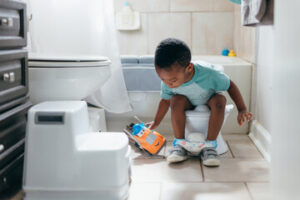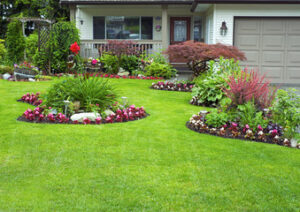Patio Awnings Near Me are an effective way to shade your outdoor living spaces from excessive sunlight. They are available in a wide range of colors and styles. Some are retractable and others are permanent. They also reduce cooling costs and prevent UV damage to furniture.

Retractable awnings are the easiest to operate and can be adjusted with the touch of a button. They are also the most versatile and allow for no, partial, or full coverage depending on how far they are extended.
When it comes to adding value to your home, patio awnings are a smart investment. They are easy to install and offer numerous benefits that can make your property more appealing to buyers. They help protect your furniture, keep your indoor spaces cooler, and reduce glare on screens. Additionally, they provide a comfortable place to relax and entertain guests. This makes them a great choice for both residential and commercial properties.
Awnings also increase the usable space in a garden or patio. They can add up to 20% to a room’s square footage and are a relatively low-cost way to increase the value of your home. This is particularly true if you live in a highly competitive market where square footage is the most important factor for prospective buyers. Awnings can also turn underused outdoor spaces into functional entertainment areas that you and your family will enjoy for years to come.
Patio Awnings are also a smart way to save on cooling costs. They can reduce the temperature inside your home by up to 15 degrees, which cuts down on air conditioning bills. In addition, they can protect carpets and upholstered furniture from fading caused by the sun’s harsh UV rays. Awnings can be a stylish addition to any home, and they are available in many colors and patterns to suit your needs.
Another benefit of awnings is their ability to protect your windows and doors from damage caused by sunlight. They can also minimise screen glare, which is a problem for people who work from home. This feature is especially useful if you have large windows that let in lots of light.
Awnings are a great addition to any home, as they create a beautiful and relaxing environment. They can even lower your energy costs and make the home more aesthetically pleasing. Awnings are available in a wide variety of designs, including retractable models that can be lowered by motor or manual operation. They can be made from a range of materials, including wood and metal. Some models can even be attached to the wall or roof of the house, and there are options for a wide variety of widths and angles.
They are easy to operate
Adding a patio awning to your home is an easy way to add both function and style. These awnings provide shade from the sun while also protecting your furniture and lowering energy costs. In addition, they can help reduce greenhouse gas emissions. They are available in a variety of colors, patterns, and styles, so you can match them to your outdoor space. Look for a supplier that offers DIY installation kits and professional installation services to ensure the best results.
Awnings are easy to operate and require little maintenance, as they are made from durable materials that can withstand weather conditions. They can be operated using a manual crank or motorized arm. The latter uses telescopic arms that use a gas-filled cylinder to open and close the awning. The cylinder can leak, so it needs to be replaced from time to time. Motorized awnings are more complicated to install than their manual counterparts, and they are more likely to require repairs due to their mechanical parts.
In addition to their aesthetic appeal, awnings are also useful in reducing energy costs and preventing damage to your windows from sunlight’s harmful UV rays. They also help keep your indoor and outdoor furniture cooler, reducing your reliance on air conditioning during hot weather. Some awnings are designed with solar screens that block out the sun’s damaging rays and increase your privacy.
Awnings can be used in a variety of settings, including patios, balconies, and decks. Some are designed to withstand light rain and hail, while others can provide protection from windy conditions. In addition, some awnings are available in different colors and textures, making them versatile enough to complement your interior decor. Moreover, they can enhance the appearance of your home and boost its value and marketability. They can also be an excellent place to work from home, as they create a comfortable and shady environment that’s conducive to concentration and creativity.
They add style to your home
Awnings can enhance your home’s curb appeal and create a shady outdoor area. You can decorate your awning with different decorative accessories, like hanging flower pots, to make it look more attractive. Awnings can also be decorated with a variety of colors and patterns, and are available in many styles to complement your home’s exterior design. The type of awning you choose will depend on several factors, including the angle and size of your outdoor space. You should also consider the material of your awning, which can affect its durability and appearance.
Awnings not only protect your patio furniture from the sun, but they also help reduce air conditioning usage. They can also help you save money on energy bills and increase the value of your home. You can even use them as a garden feature and grow climbing plants on them.
Homeowners can choose between fixed and retractable awnings. The latter offer a customizable option that can be operated manually or with a remote control. They can be angled to provide shade or light, depending on your preference. These awnings are available in many shapes and sizes, so you can customize them to suit your style and budget.
You can add more style to your awnings by choosing the right fabric and color for them. Neutral tones are versatile and easy to coordinate with other decor elements, while bold colors and patterns add personality and interest. You can also select a fabric with a special finish to prevent fading and maintain its shape.
Another way to decorate your awnings is by adding lights. Having adequate lighting not only makes your patio more comfortable, but it can also improve safety. It can be used to illuminate pathways and potential hazards, as well as highlight architectural features or flowers.
Awnings can be decorated with many types of lights, such as LEDs, solar, or incandescent bulbs. You can also use string lights for a more festive and romantic atmosphere. It’s important to choose a design that will blend with the style of your house, as it can make or break its curb appeal. You should always check if your awnings are properly mounted and secured to the wall or posts, so they don’t fall over. You should also inspect them regularly for signs of wear and tear. If you notice any problems, repair them immediately.
They provide shade
The shade provided by awnings helps protect your home and patio furniture from the sun’s harmful UV rays. These rays can not only damage your skin, but also fade outdoor furniture over time and make it look worn. Besides providing shade, awnings can help reduce energy bills and make your outdoor space more comfortable. Moreover, they can improve the curb appeal of your home and make it look stylish and well cared for.
Awnings come in a variety of shapes, sizes, and materials. Some can be built using metal, wood, or synthetic fabric. They can be permanent or retractable, and can be designed to complement your house’s architecture. Some awnings are even equipped with sensors to adjust the shade automatically, depending on weather conditions.
Retractable awnings provide shade and protection from sunlight, which can damage your furniture. They also help save on your cooling costs by reducing passive solar heat gain. They are also available in a variety of colors and patterns, which can add a decorative touch to your home.
Choosing the right awnings for your home depends on many factors, such as the angle of the sun and the size of the area being covered. An awning with a higher angle can block more of the sun’s heat and prevent excessive shading. It is important to choose a fabric that will be durable and last for a long period of time.
Some awnings are equipped with wind, rain, and sun sensors that can adjust the shade to the appropriate angle according to the weather conditions. These awnings are ideal for people who want to control the amount of shade they get without having to manually move it. Awnings that can be adjusted manually or electronically are also great for homeowners who want to save money on their electricity bill.
Awnings are a good investment for any homeowner. They can provide both a stylish and functional addition to any home. These awnings can reduce your electric bills, block the sunlight from reaching the windows, and improve the kerb appeal of your property.


